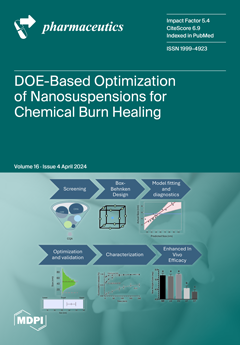Background: Pharmacogenomic knowledge as a biomarker for cancer care has transformed clinical practice, however, as current guidelines are primarily derived from Eurocentric populations, this limits their application in Latin America, particularly among Hispanic or Latino groups. Despite advancements, systemic chemotherapy still poses challenges
[...] Read more.
Background: Pharmacogenomic knowledge as a biomarker for cancer care has transformed clinical practice, however, as current guidelines are primarily derived from Eurocentric populations, this limits their application in Latin America, particularly among Hispanic or Latino groups. Despite advancements, systemic chemotherapy still poses challenges in drug toxicity and suboptimal response. This study explores pharmacogenetic markers related to anticancer drugs in a Chilean cohort, filling a gap in Latin American research. Notably, the influence of native South American Mapuche-Huilliche ancestry. Methods: To explore pharmacogenetic markers related to anticancer drugs, we utilized an ethnically Admixed Chilean genome-wide association studies (GWAS) dataset of 1095 unrelated individuals. Pharmacogenomic markers were selected from PharmGKB, totaling 36 level 1 and 2 evidence single nucleotide polymorphisms (SNPs) and 571 level 3 SNPs. Comparative analyses involved assessing SNP frequencies across diverse populations from the 1000 Genomes Project. Haplotypes were estimated, and linkage disequilibrium was examined. Ancestry-based association analyses explored relationships between SNPs and Mapuche-Huilliche and European ancestries. Chi-square distribution with
p ≤ 0.05 and Bonferroni’s multiple adjustment tests determined statistical differences between allele frequencies. Results: Our study reveals significant disparities in SNP frequency within the Chilean population. Notably, dihydropyrimidine dehydrogenase (
DPYD) variants (rs75017182 and rs67376798), linked to an increased risk of severe fluoropyrimidine toxicity, exhibit an exceptionally low frequency (minor allele frequency (MAF) < 0.005). Nudix hydrolase 15 (
NUDT15) rs116855232, associated with hematological mercaptopurine toxicity, is relatively common (MAF = 0.062), and is further linked to Mapuche-Huilliche ancestry. Thiopurine methyltransferase enzyme (TPMT), implicated in severe toxicity to mercaptopurines, SNPs rs1142345 and rs1800460 of
TMPT gene demonstrate higher MAFs in Admixed Americans and the Chilean population (MAF range 0.031–0.057). Finally, the variant in the UDP-glucuronosyltransferase 1 gene (
UGT1A1) rs4148323, correlated with irinotecan neutropenia, exhibits the highest MAF in East Asian (MAF = 0.136) and Chilean (MAF = 0.025) populations, distinguishing them from other investigated populations. Conclusions: This study provides the first comprehensive pharmacogenetic characterization of cancer therapy-related SNPs and highlights significant disparities in SNP frequencies within the Chilean population. Our findings underscore the necessity for inclusive research and personalized therapeutic strategies to ensure the equitable and effective application of precision medicine across diverse global communities.
Full article






